Wasdale Head Inn, Lake District
Famously one of the early focal points in the birth of mountaineering, the Wasdale Head was a base for the first English alpinists from the early 1800s.
Many luminaries of the climbing world have visited since, and its Ritson’s Bar and Residents’ Bar remain legendary climbers’ meeting points. It was here, too, that the Lake District Ski Club was founded in 1936, when a local climber, Molly FitzGibbon, marched into the bar and announced that she was starting one.
As a rare, and isolated, hotel in the Wasdale valley, it sits at the end of Wastwater, the Lake District’s deepest and arguably most dramatic lake: there are terrible scree slopes on one side; on the other an incongruous fringe of beaches popular with swimmers in summer; and above, the highest mountains.
From the tables outside, the view is dominated by the steep flanks of Kirk Fell and Great Gable. The crowds come to bag Scafell Pike, England’s highest peak, but those who hike in the opposite direction – beside the lovely Mosedale Beck and up to Black Sail Pass and the summit of Pillar – can leave most other walkers behind.
More mucky boots than boutique, the accommodation – nine bedrooms in the main hotel, plus three apartments and six self-catering apartments in a converted barn – is simple and functional rather than chic, but of course, it’s the views people come for.
Singles £60 B&B, doubles from £120, self-catering apartments (sleep 2-4) from £249 for three nights, wasdale.com. The pub also has a campsite
Pen-Y-Gwryd Hotel, Snowdonia
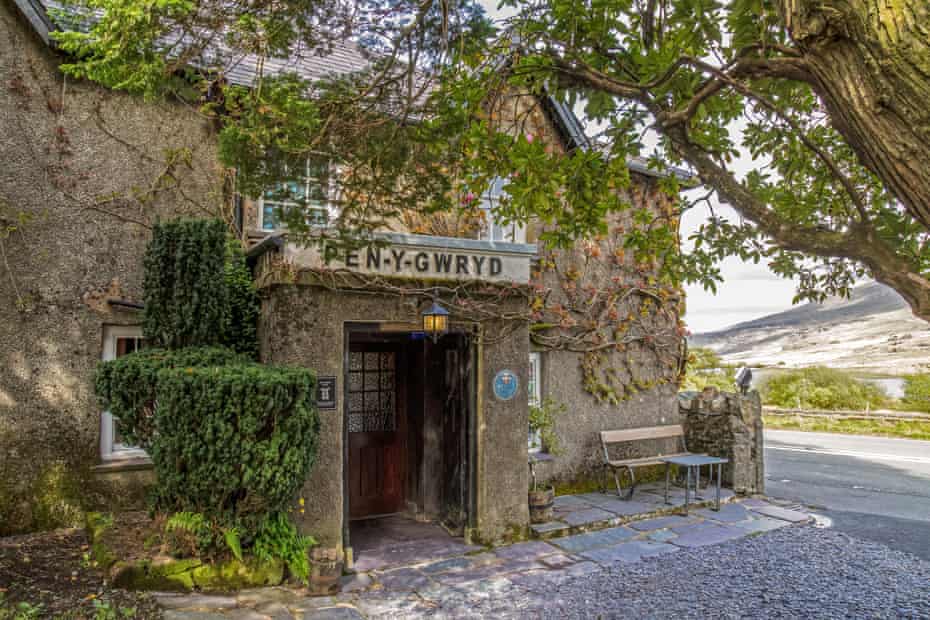
When news of the ascent of Everest by Tenzing Norgay and Edmund Hillary reached the UK in 1953, the landlord of the Pen-Y-Gwryd ran up and down the hotel corridors banging on the doors in the middle of the night, insisting the guests rise and climb Snowdon in celebration.
After all, the Everest team had used the hotel as a training base for the expedition.
The PYG, as it is known by its many fans, was already a popular climbers’ hangout, on its way to becoming the legendary place of pilgrimage for mountaineers that it is today, immortalised by writers such as Jan Morris and Eric Newby, who trained here for his Afghanistan adventure detailed in A Short Walk in the Hindu Kush.
The long-standing alpinist aesthetic remains unchanged and unmodernised, with clunky climbing memorabilia and equipment decorating the walls, including the enamel mug Hillary was drinking from in the famous picture of him and Tenzing enjoying a brew on their way down. The ceiling has been autographed by both, along with other eminent mountaineers, such as Chris Bonington.
Today the quarters are more comfortable. Along with more basic rooms there are garden suites and premium bedrooms, plus a garden sauna and a swimming lake.
Doubles from £95 B&B, pyg.co.uk
Rugglestone Inn, Dartmoor
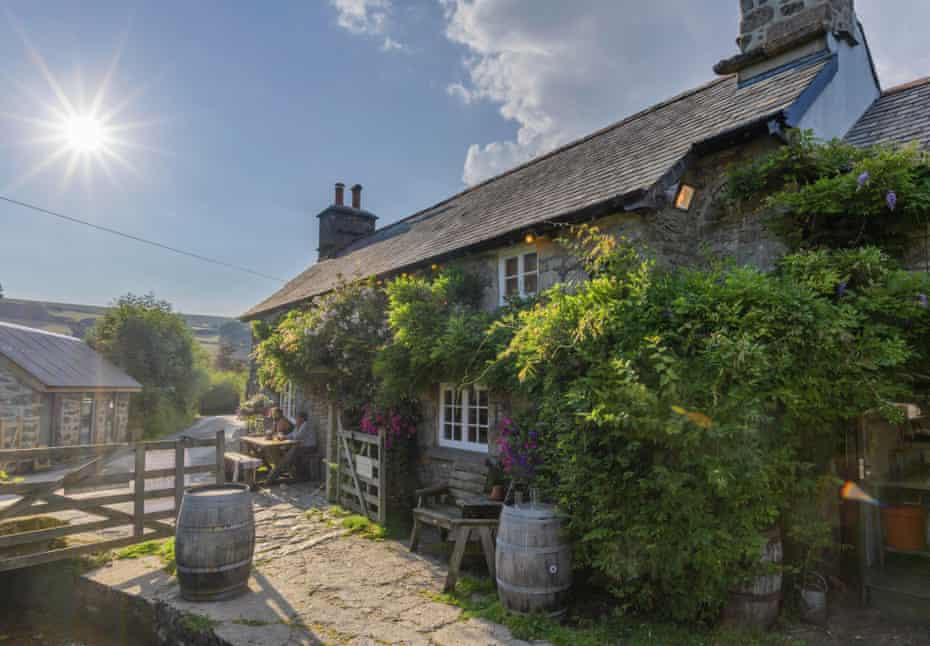
In the Dartmoor village of Widecombe-in-the-Moor, the Rugglestone Inn is as homely, animal-friendly and food-focused as you might expect from a pub which began life as a farmhouse.
Pigs, goats and chickens greet walkers arriving back from the moors, and the kitchen relies on ingredients sourced from local farms and suppliers.
Legend has it that a pub which once stood nearby was burnt to the ground in 1823 as an act of protest by the wives of tin miners and farmworkers who were apparently spending a bit too much time and money there. The licence passed to the nearby farm, which became one of England’s smallest pubs. Prior to the founding of the NHS it hosted the Widecombe Sick Club, a community medical service to which villagers contributed funds.
Rather than rooms upstairs, there’s accommodation in the form of Rugglestone Cottage, where guests can get meals delivered to the door. Staying a few nights means ticking off some great hikes from the village: loops to Haytor, Bell Tor, Hound Tor, around Fernworthy reservoir and to the swim spots of Dartmeet. A six-miler leads to another interesting old pub, the off-grid Warren House Inn, where the fire has been burning since 1845. Its position is so high and isolated that in the Big Freeze winter of 1963 it was cut off by snow for 12 weeks and supplies had to be delivered by helicopter.
Cottage sleeping four from £375-£750 a week, rugglestoneinn.co.uk
The Drovers Inn, Loch Lomond
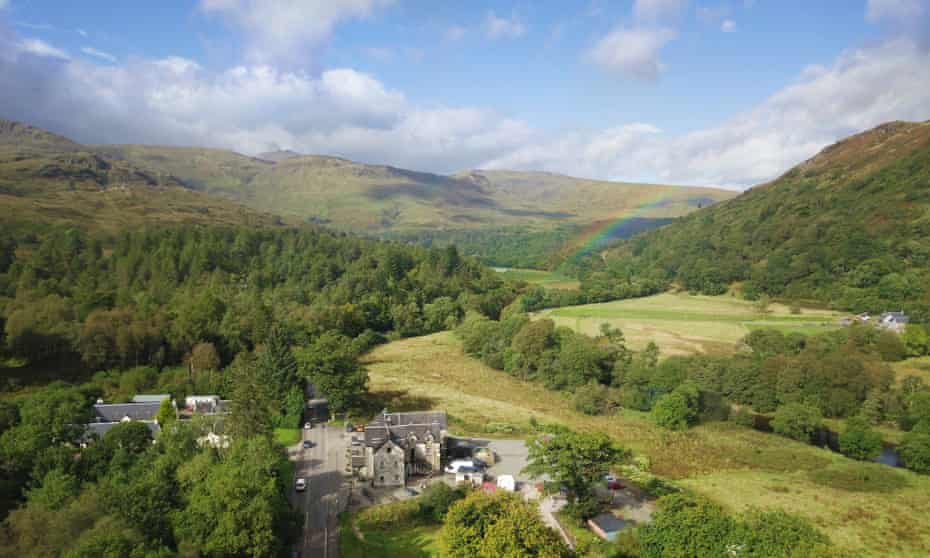
It’s a thrill to step over the threshold into the Drovers Inn for the first time, into a midnight-dark space, with black walls and ceiling. It has a medieval feel – candlelit, with a huge array of taxidermy, including a stuffed bear.
The West Highland Way – Scotland’s first and most popular long-distance route, a 95-mile geographical rollercoaster from Milngavie to Fort William, using old drovers’ trails, coaching roads and disused railway lines – passes close by. Others come to explore the Loch Lomond and The Trossachs national park, on the doorstep.
Bring ear plugs in the unlikely event you don’t intend to join in the fun in the bar, which usually hosts live music on weekends, or opt for one of the 16 rooms in a more modern lodge over the road, rather than the 15 bedrooms in the 300-year-old inn. These have tartan carpets and antiques, one a Jacuzzi and another, they say, a ghost.
Doubles from £104 B&B high season, £80 low season, droversinn.co.uk
The Border Hotel, Scottish Borders
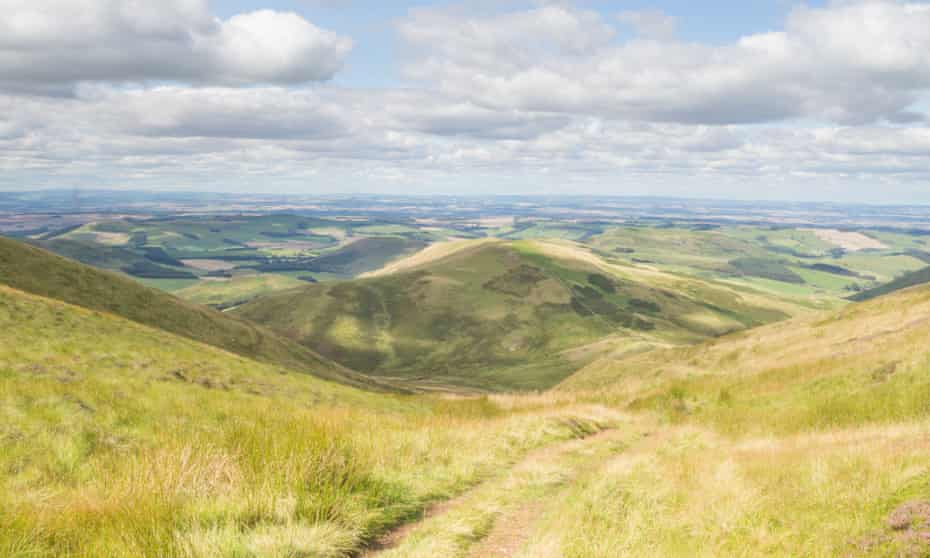
There’s a free half-pint of beer and a certificate waiting in the fire-lit bar of the Border Hotel for anyone who completes the Pennine Way, which finishes here in the village of Kirk Yetholm, just across from England in the Scottish Borders.
Alfred Wainwright started the tradition back in 1968, promising in the back of his definitive guidebook to buy anyone who finished the route a pint and sending the hotel £50 in advance to cover the first 500 hikers. He failed to predict its popularity, and his promise ended up costing him a fortune. Nevertheless, he stuck by it, although he dropped the reward to a half-pint in 1979.
St Cuthbert’s Way also passes through, following the route taken by the saint in 650AD when he travelled from Melrose to Lindisfarne.
The hostelry sits in a prominent position on the village green, and dates back to 1750. Guests can stay in six smart rooms or a three-bedroom cottage, with breakfast provided at the hotel.
Doubles from £75 B&B, borderhotel.co.uk
The Felin Fach Griffin, near Brecon
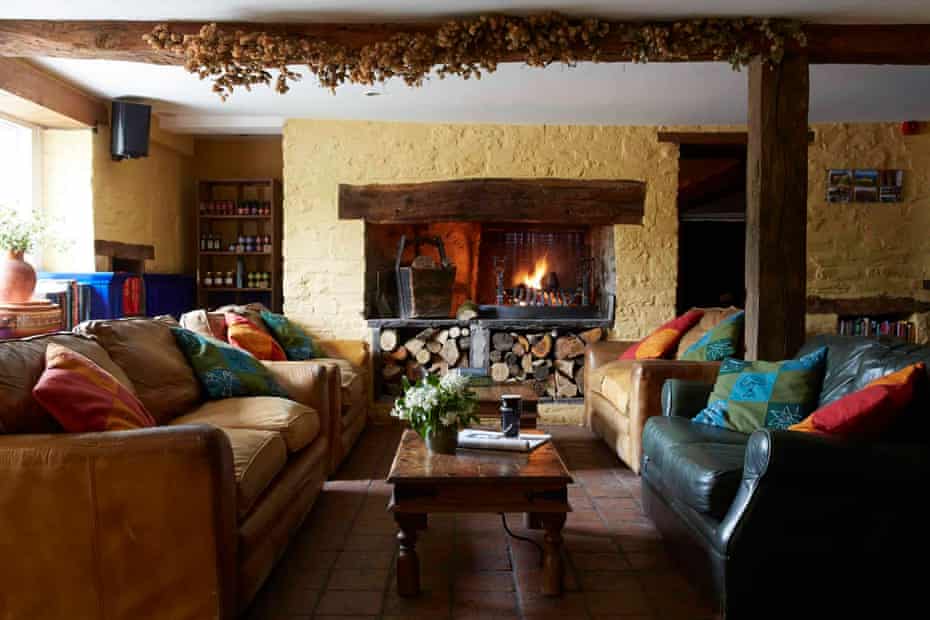
The Griffin is less of a weathered old boots hanging above the fireplace-type venue than most inns on this list – it was one of the UK’s early rural gastropubs.
With the Brecon Beacons stretching to the west and the Black Mountains nearby, there are tons of fabulous walks at hand, and the hotel is well supplied with maps, guidebooks and local advice on where to go. It can also arrange what it calls “a wise old man of the hills” to lead you – namely Kevin Walker, who guides small groups and offers navigation training.
Canoeing, rock climbing, biking and fishing are also popular with guests here, to sharpen their appetites for fine suppers of, say, barbecue sea bass with gooseberries, or lamb rump. The eight rooms are properly stylish, with antiques, wood panelling and jazzy textiles.
Doubles from £145 B&B, eatdrinksleep.ltd.uk
Old Nags Head, Peak District
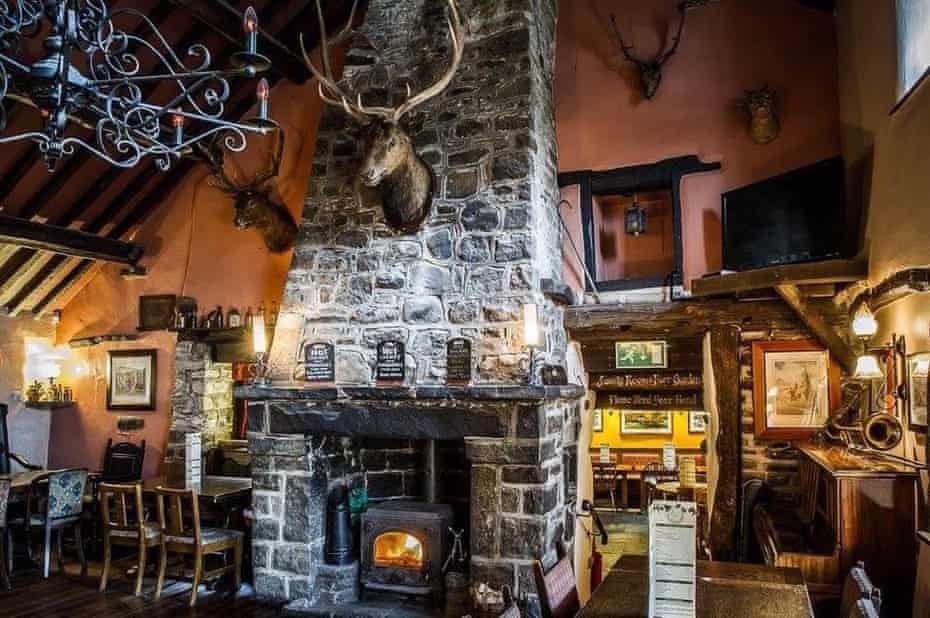
The official start of the Pennine Way is not a gatepost, stile or stone marker, but the Old Nags Head, a well-worn inn established in 1577 in the Peak District village of Edale.
Those about to tackle the entire 268-mile route along the backbone of England can certainly justify a few nerve-settlers here before they set off. After all, it’s one of the UK’s wildest and gnarliest long-distance trails, taking in steep, remote and boggy landscapes, with a combined ascent greater than the height of Everest. You’re soon up into those dramatic landscapes from the pub, leaving the grassy basin of the Edale valley to scale Jacob’s Ladder, a series of steps carved into the hillside climbing towards Kinder Scout, and the Dark Peak area’s gritstone.
The pub’s lounges and snugs are always full of walkers, and there’s accommodation in two cheerful cottages with light, smart rooms.
Cottage sleeping three from £240 for three nights, the-old-nags-head.co.uk
The Fox Goes Free, South Downs
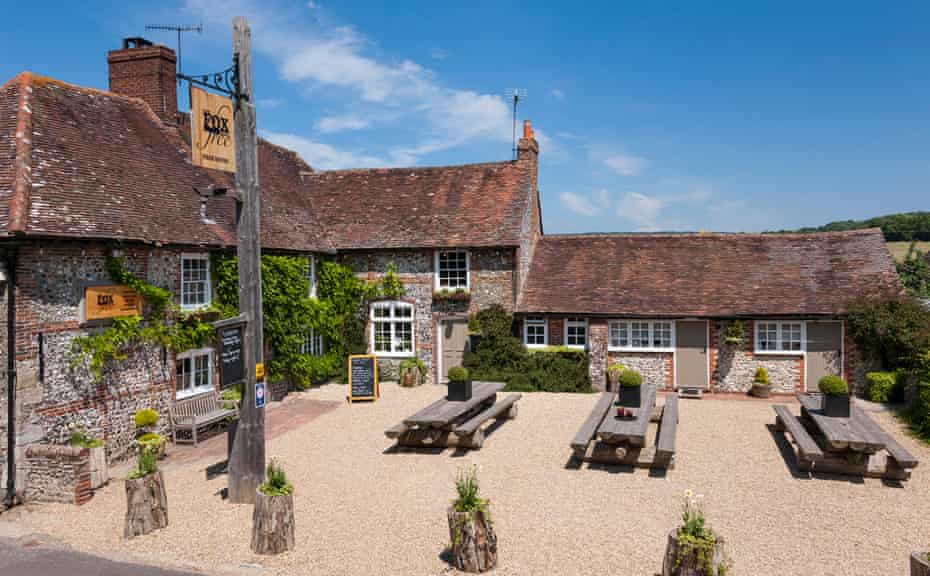
The gorgeous South Downs Way, the 100-mile chalk ridge route between Winchester and Eastbourne, isn’t short of lovely pubs to round off a walk.
It passes by many well-to-do villages and arty towns, as well as the odd rural outpost where you can grab a pint. The Fox Goes Free is one, a smartened-up 400-year-old country boozer with a beautiful beer garden.
A quick deviation from the trail east of Cocking and West Dean, down footpaths through Charlton Forest, brings you here. A large lawn out the back is dotted with blossom trees and handmade wooden tables, with splendid views of the grassy humps of Levin Down behind.
This pretty chalk grassland is a Site of Special Scientific Interest, managed by the Sussex Wildlife Trust, and a visual balm for a weary hiker’s eyes, especially with a cask ale in hand. A good menu runs from vegan curry to chef’s pie of the day, with everything made in the kitchen, even the bread and chips. Stylish bedrooms have wooden beams and fireplaces, and some open onto the front yard.
Doubles from £109 for two, or from £85 single occupancy, thefoxgoesfree.com
The Fullerton Arms, the Causeway Coast
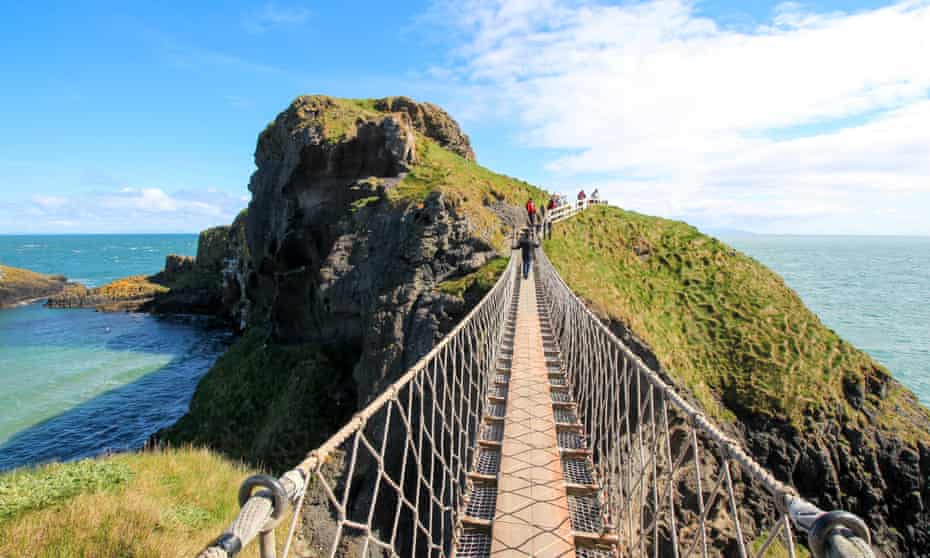
The drama of the Giant’s Causeway coast and its clifftop trails are only a short walk from the Fullerton Arms, a stylish pub in the harbour village of Ballintoy in County Antrim.
Black wood panelling, teal walls and contemporary Scandi-style furniture in the rooms make it a chic base for hikers, while the restaurant has a moulerie menu featuring six different ways with mussels.
Also five minutes away is the Carrick-a-Rede rope bridge, a white-knuckle crossing from the clifftops to Carrick-a-Rede island, home to a single fisherman’s cottage. Visitors sway 30 metres high above the crashing Atlantic waves as they cross, making it a short walk that packs the adrenaline punch of a high-altitude trek.
For longer hikes, the Earl Bishop Trail runs nearby, for 60 miles – from the Giant’s Causeway to the city of Derry, through off-radar landscapes that take in Georgian follies, churches and sites connected to Frederick Hervey, 4th earl of Bristol. This colourful English aristocrat became a popular bishop of Derry in 1768 and was admired for his humour and antics, such as making his clergymen race along the beach.
Doubles from £90 B&B, singles from £50, fullerton-arms.com
Clachaig, Glencoe, Highlands
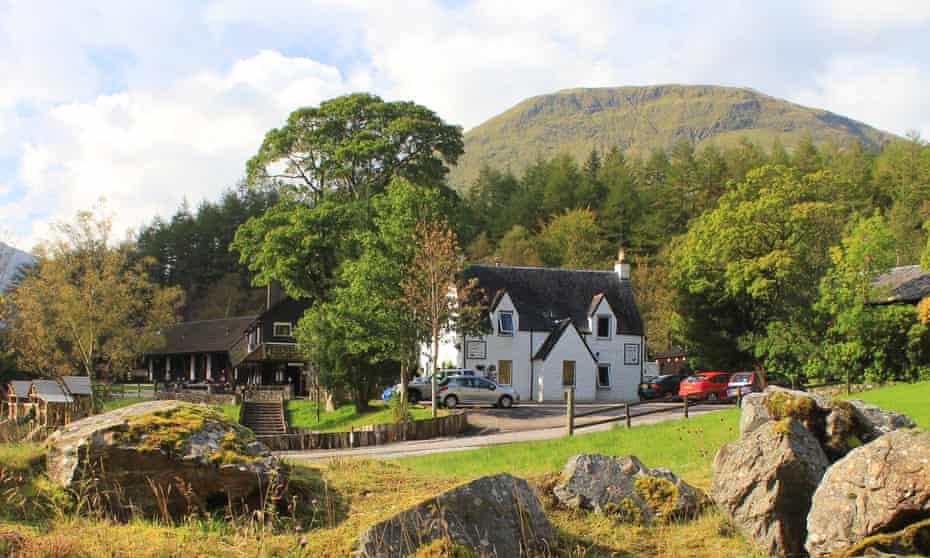
When the wind and rain have been lashing your Gore-Tex for hours, arriving into the warmth of a pub like the Clachaig will feel like passing through the pearly gates.
Under the spectacular west face of Aonach Dubh, surrounded by the towering, often snow-topped peaks of Glencoe, this rambling inn is a favourite among outdoors folk. It’s a base for conquering Buachaille Etive Mor, Bidean Nam Bian and the scarily narrow Aonach Eagach ridge, as well as shorter walks into the Lost Valley, then returning to the pub’s three bars.
The Boots Bar is where skiers, rock-climbers, hikers and canoeists debrief over malt whiskies and gins from a list of hundreds, or a local cask ale. It’s a large space with a slate floor and fire and regular live acoustic music. There’s also the quieter Snug, in the old beer cellar, and the light, bright Bidean Lounge, where signed photographs of mountaineers such as Chris Bonington and Doug Scott cover the walls.




